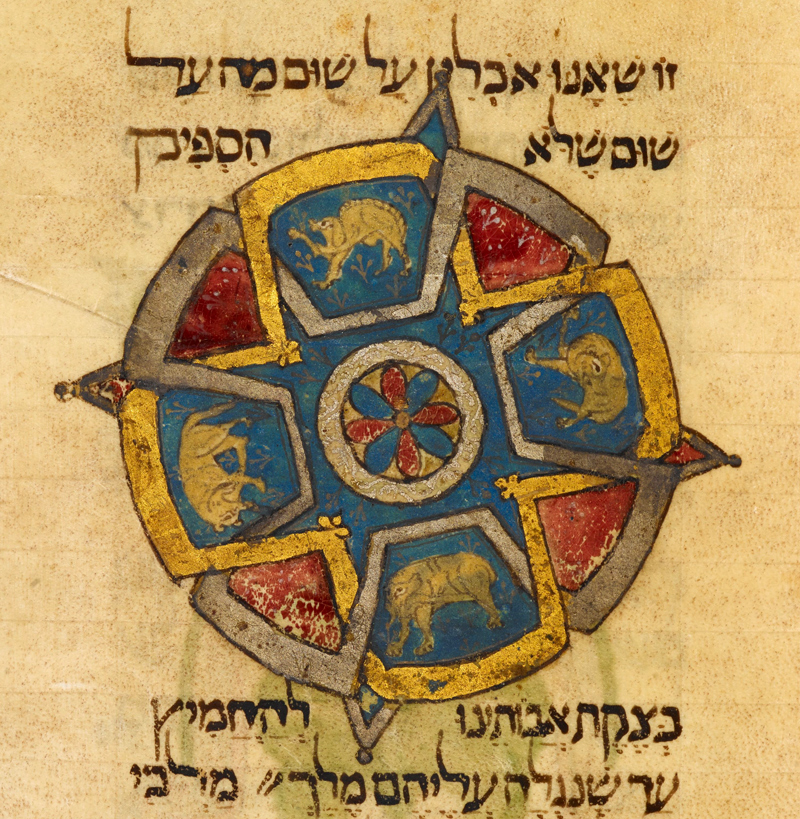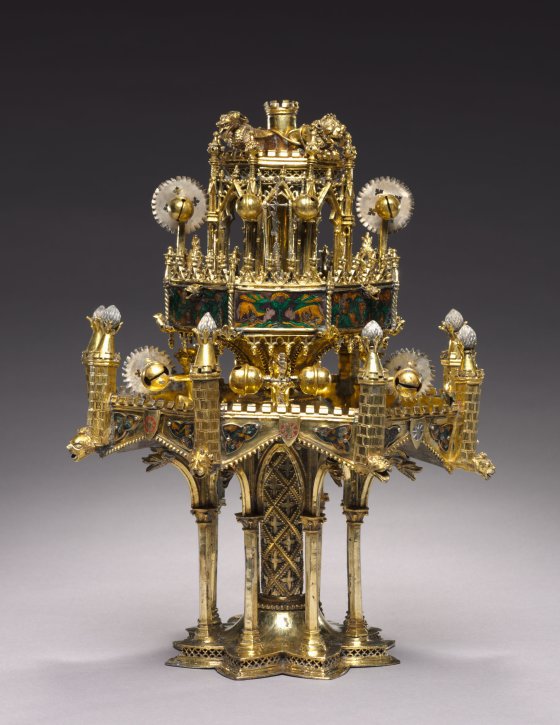Chosen among select class of 175 artists, writers, scholars and scientists
Elina Gertsman’s fascination with medieval art began in her childhood spent in Tallinn, Estonia, a city that’s marked with its medieval past: ramparts, towers, churches, guild halls and town square that also reflect its diverse mix of Danish, German and Russian histories.
“My love of that city was all-consuming,” said Gertsman, who held onto her deep interest in the Middle Ages after emigrating from what was then the Estonian Soviet Socialist Republic to the United States with her family as a teenager.

Now, her scholarship as a medievalist has garnered her one of the most prestigious honors given to academics and creatives the world over: a John Simon Guggenheim Memorial Foundation Fellowship.
Among the 175 Fellows who comprise the foundation’s 96th class—“appointed on the basis of prior achievement and exceptional promise,” according to a foundation press release—Gertsman was chosen from nearly 3,000 applications.
The award will support Gertsman— professor of art history and the Archbishop Paul J. Hallinan Professor in Catholic Studies II at Case Western Reserve University—for a year as she works on a new book, Withdrawal and Presence: Visualizing Medieval Abstraction.

The aim of this project is to “release the notion of abstraction from its modern and contemporary confines,” Gertsman wrote in her Guggenheim proposal, and “to explore its inception and transformations throughout the Middle Ages.”
Guggenheim Fellows can use the honor’s monetary award in any way that provides “as much creative freedom as possible” to work, according to the Guggenheim Foundation.
“A leading medievalist in the world today”
Announced in early April, Gertsman’s Guggenheim was of no surprise to her colleague Elizabeth Bolman, chair the Department of Art and Art History and herself a 2011 Guggenheim Fellow.
“Widely acknowledged as one of the leading medievalists in the world today, Professor Gertsman is more than that,” Bolman said. “She is one of the most creative and innovative research scholars in any field of endeavor in the humanities.”

Among Gertsman’s books is the 2010 The Dance of Death in the Middle Ages: Image, Text, Performance, winner of the John Nicholas Brown Prize from the Medieval Academy of America for the best first book in medieval studies, as well as the 2015 Worlds Within: Opening the Medieval Shrine Madonna, which was shortlisted for the Charles Rufus Morey Prize and winner of the inaugural Karen Gould Prize in Art History, given to an outstanding book in medieval art history. More recently, Gertsman co-authored The Middle Ages in 50 Objects (2018), and yet another monograph, Nothing is the Matter: Spaces of Absence in Late Medieval Art will be published next year.
“Exploring the ways in which the concept of abstraction helps create meaning in medieval manuscripts and wall paintings, Professor Gertsman helps us understand expressions of the unknowable nature of the divine,” said Bolman. “Uncovering an extensive focus on abstraction—well before the 20th century art movement of the same name—Gertsman is making a startlingly original contribution to the history of art.”
The 2020 Guggenheim class includes Fellows from 53 scholarly disciplines and artistic fields, 75 academic institutions and 31 states; they range in age from 29 to 82.
Since 1925, Fellowships have been awarded to countless Nobel laureates, Fields Medalists, poets laureate, members of the national academies, and winners of various honors, including the Pulitzer Prize, Turing Award, Bancroft Prize and National Book Award. For more information on the 2020 Fellows, visit the foundation’s website.

While known internationally for her work, Gertsman has also contributed to local institutions. Her Middle Ages in 50 Objects is based on the collections of the Cleveland Museum of Art, and in 2016 she co-curated a centennial CMA exhibition “Myth and Mystique: Cleveland’s Gothic Table Fountain” and co-wrote its accompanying catalogue.
At Case Western Reserve, Gertsman also serves as director of graduate studies in her department and is a core faculty member of the Women’s and Gender Studies Program. In the past few years she has won both Diekhoff Awards: one for Distinguished Graduate Teaching (2015) and another for Distinguished Graduate Mentoring (2019).
Fellow Fellows
Following in a tradition of Case Western Reserve academics earning Guggenheim Fellowships, Gertsman joins fellow College of Arts and Sciences faculty member Michael Clune, a professor of English, who was selected as a Fellow in 2019, and Distinguished University Professor Cynthia Beall, the Sarah Idell Pyle Professor of Anthropology, who won a Fellowship in 2011.
Other Case Western Reserve Guggenheim awardees include Distinguished University Professor of Physics Glenn Starkman (2003); Martha Woodmansee (1999), professor of English and law emerita; Dan Cohen (1999), an associate professor in the Department of History; Ted Steinberg (1996), the Adeline Barry Davee Distinguished Professor of History; David Hammack (1986), the Hiram C. Haydn Professor of History Emeritus; and Athena Vrettos (1996), an associate professor in the Department of English.
For more information, contact Daniel Robison at daniel.robison@case.edu.
This article was originally published April 14, 2020.


